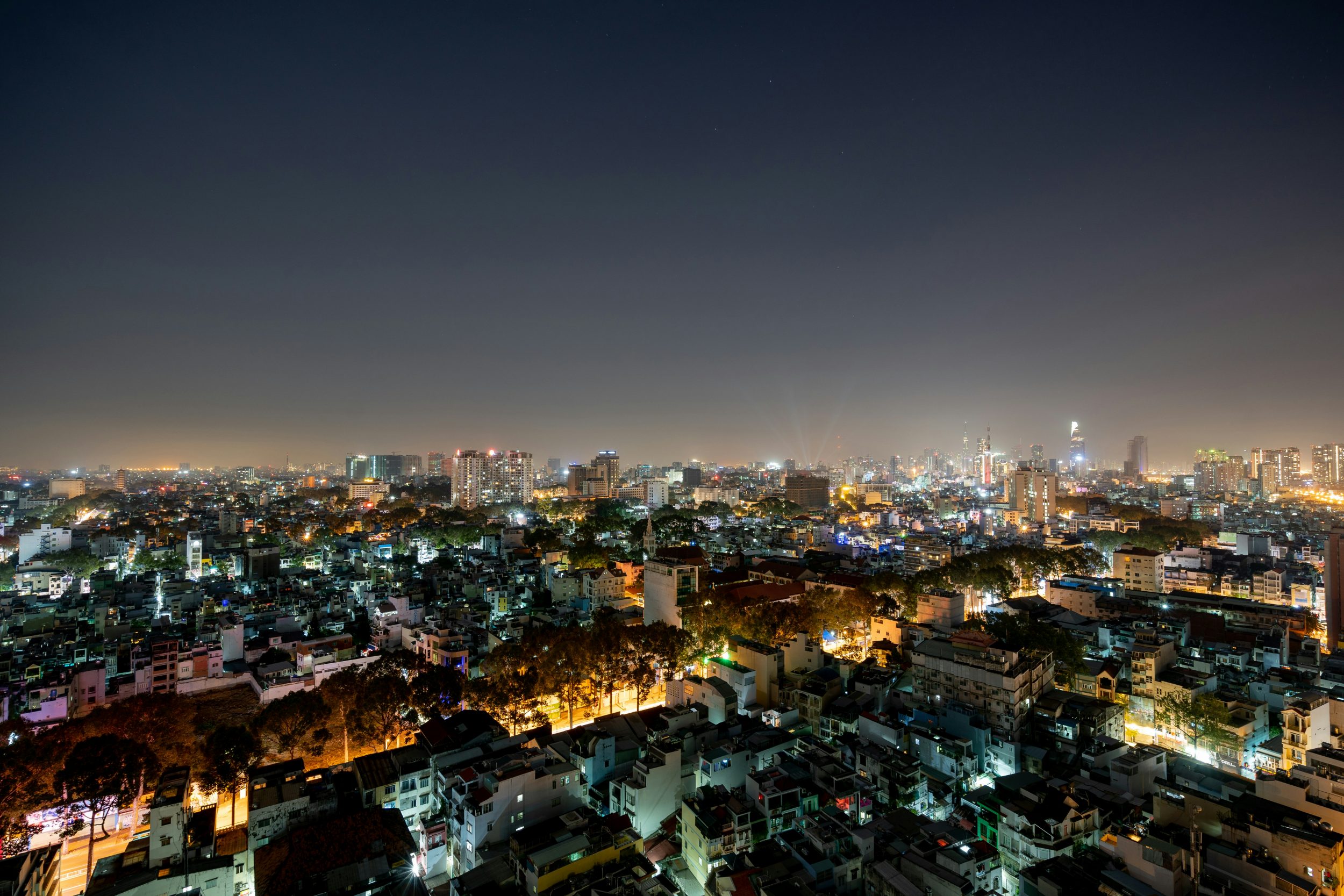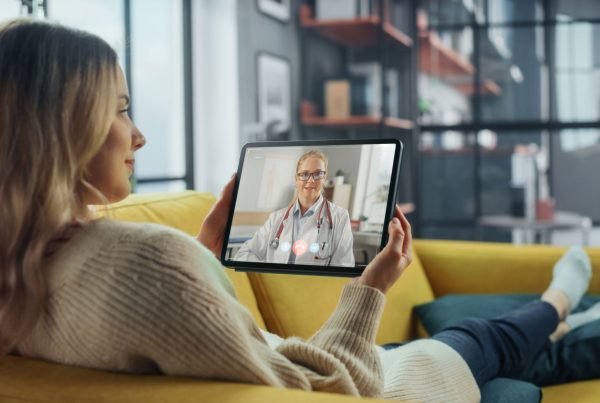In our modern world, bright lights are used in a number of different ways to illuminate our cities, our homes, and communities. The computers we use to work from home, the streets we drive our cars down, the billboards we look up at, and our personal rooms are all filled with the glow of artificial light, yet we tend to overlook the impact of such high levels of light pollution on our well-being. According to The New World Atlas of Artificial Sky Brightness, more than 80% of the world population and more than 99% of American and European populations reside under light-polluted skies.1 Even with the reach of light pollution being quite universal, its long-term effects on brain function and mental health are not commonly known. In this article, we will explore the intricacies of light pollution and how its effects can disrupt not only our sleep patterns and circadian rhythms, but on other aspects of our psychological health.
What is light pollution?
Created in the late 1800s by Thomas Edison, incandescent light bulbs were the first introduction of artificial light to the modern world. Fast forward to 2024, and a world without artificial light is hard to fathom. Artificial light is not an inherently bad thing — it serves an important function to keep communities safer at night, prolong the work day, allows us to continue doing activities that need light, and has also paved the way for modernization and evolving technologies. However, too much artificial light spanning centuries has accumulated into severe light pollution. Light pollution is defined by environmentalists as an excessive, inappropriate use of artificial light, which includes skyglow and bright lights illuminating off of electronic screens.2,3 This type of light can cause serious environmental repercussions for wildlife, humans, and climate.3
Since its earliest introduction, artificial light has become even brighter with the creation of colder, higher-efficiency light-emitting diodes, or LED lights. LEDs have quickly become one of the most utilized types of artificial light, being introduced into our car headlights, street lights, and backlights of phones, computers, tablets, and televisions. The pollution from LEDs and all artificial light not only dims the stars in the sky, but is also disruptive to the natural environment and cycles of life on Earth, including human biology. Research shows that light pollution could affect many systems of our human bodies, and there are indirect positive associations between light pollution and retina pathology, cardiovascular damage, depression, sleep disturbances, and cancer.3
Circadian Rhythms
Perhaps one of the more well-known effects of light pollution is its impact on the human circadian rhythm. As humans, our bodies operate on a 24-hour cycle known as the circadian rhythm or circadian clock. This cycle regulates various physiological processes within the body, such as sleep-wake patterns, brain waves, hormone production, cell regulation, and a variety of other biological processes.4 The cycle is influenced by photoreceptor cells in the eye that are sensitive to blue wavelengths of light.
Melatonin and Artificial Light
For humans to maintain a healthy circadian rhythm, research suggests that we experience outdoor lighting during the day and then minimize the amount of light that enters the eyes at night.5 Exposing the eyes to artificial light at night can disrupt the circadian rhythm and contribute to some medical issues. Research from the University of California, Irvine has shown that disruption of the body clock is linked to depression, insomnia, cardiovascular disease, and cancer.4 Studies have also determined that circadian rhythm control around 10-15% of human genes, so the disruption of circadian rhythms is detrimental to sleep health and overall health.
In addition, night time exposure to artificial light suppresses the body’s melatonin production, which is important to our health. Melatonin is a hormone that is produced by the body when it is dark outside, and it is known to induce sleep, help with the healthy functioning of the thyroid, pancreas, testes, ovaries, and adrenal glands.5 The disruption hormone can lead to insomnia, poor sleep quality, and can also negatively affect mood and brain function. Difficulties with regulating the circadian rhythm can lead to a variety of sleep disorders, such as sleep-work disorder and sleep-phase disorder. Sleep-work disorder affects individuals who rotate shifts and work at night, while sleep-phase disorder affects individuals who fall asleep very late at night and subsequently have a difficult time waking up for school, work, or other social engagements.4 Melatonin production can be disrupted by any type of artificial light, but the photoreceptor cells in the eyes that disrupt melatonin production are most sensitive to blue light, and LEDs are known to create very high levels of blue light.
Impact of Light Pollution on Brain Function
Light pollution does not just disturb our sleep patterns, it also affects the function and structure of our brains. Extensive research has shown that exposure to continuous light, especially during the nighttime, can be detrimental to various biological and cognitive functions. Blue-light exposure in particular has been shown to accelerate aging processes, damage retinal cells, cause brain neurodegeneration, and impair movement. Evidence suggests that the disruption of the circadian rhythm due to light pollution can increase the development of chronic sleep deprivation, which is a risk factor for neurodegenerative diseases such as Alzheimer’s disease.3 Individuals who are sleep deprived have a 1.49-fold higher risk of developing Alzheimer’s compared to individuals who do not have sleep or circadian rhythm disruptions. In addition, research supports that the disruption of melatonin production due to artificial light exposure can interfere with the production and control of pathological proteins such as acetylcholine, which is depleted in the brains of Alzheimer’s patients.3
Light Pollution and Mental Health
Light does not always have a negative influence on the human body. Studies show that exposure to sunlight can have positive effects on people’s health. The sunlight is one great way for individuals to reach adequate levels of vitamin D, which is a vitamin that is linked to several mood disorders when it is found in deficient levels.2 In addition, exposure to the sun is great for individuals suffering from seasonal affective disorder, or SAD. SAD is a mental disorder that affects individuals in areas where they are in contact with low levels of direct sunlight. You can read more about SAD at our blog, in the article “Everything You Need To Know About Seasonal Depression”. Light is a great source for combating seasonal depression, but the amount of light we get can also play a major role in its effects on us.
With the onslaught of electricity and LED lights, we are constantly exposed to light well after the sun has gone down. The lights that we are exposed to inside of our homes seem to have an even higher impact on our health, since the screens we use (such as phones, televisions, laptops, and tablets) are at higher brightnesses, and we are more exposed to this light for longer periods of time. The issue with this is that the sun and other outdoor lighting areas already provide us with plenty of blue light exposure. With blue light exposure being associated with the functioning of the body’s circadian rhythm, exposure to such high levels of blue light can compromise our overall physiological health. For example, research has shown that light pollution is linked with a decrease in average night’s sleep length for young US teens and adolescents. Sleep deprivation for this age group can cause a number of issues, such as poorer performance in school and work, increased mood swings, and a heightened risk for anxiety and/or depression.2 Anxiety may even worsen due to brightly lit environments increasing arousal and stress responses. Teens may be at the highest risk because they are more engaged with artificial light from screens compared to other age groups, but all people are at risk for the effects of light pollution. People who live in predominantly urban areas with exposure to high levels of artificial nighttime light are also at high risk. In addition, further research supports that exposure to artificial light at night has a positive association with depressive symptoms and other mood disorders.1
Reduce the Impact of Light Pollution
In our society today, it is nearly impossible to avoid all light pollution. Workplace environments and occupational requirements make it difficult for us to be away from laptops and cellphones for an extended period or time, and living in city centers makes light pollution even worse. In fact, research has shown that the skyglow that pollutes the night sky in Los Angeles is visible to airplanes that are 200 miles away from the city!4 Light pollution is everywhere we go, but it does not mean that we cannot reduce some of its effects on us.
- Create boundaries for technology at night. If you and those around you have a tendency to use electronics late into the night, try to set boundaries with the technology at a reasonable time. Setting limits for screen time at a certain hour can reduce the amount of blue light you expose yourself close to bed, and can improve sleep quality and circadian rhythm. If your bedtime is at 11pm, try getting off your phone at least an hour before bed and read a book to unwind instead.
- Rearrange your sleep environment. Streetlights and other distractions outside our bedroom windows can be disruptive to getting quality sleep. Try investing in black-out curtains or an eye mask to reduce the amount of light you are exposed to when you go to bed. It may just lead to better quality sleep, and allow you to fall asleep quicker and for longer.
- Choose warmer light bulbs. Investing in light bulbs with lower levels of LED light in them can reduce the amount of blue light you expose yourself to within the home. This will be easier for your circadian rhythm to adjust to, especially if you switch the primary sources of light in your home to non-LED light sources.
References:
-
https://www.sciencedirect.com/science/article/abs/pii/S0048969722022781?via%3Dihub
-
https://fherehab.com/learning/light-pollution-mental-health
-
https://link.springer.com/article/10.1007/s11357-023-00932-0
-
https://www.ncbi.nlm.nih.gov/pmc/articles/PMC2627884/
-
https://darksky.org/resources/what-is-light-pollution/effects/human-health/#:~:text=Many%20studies%20have%20shown%20that,Obesity







